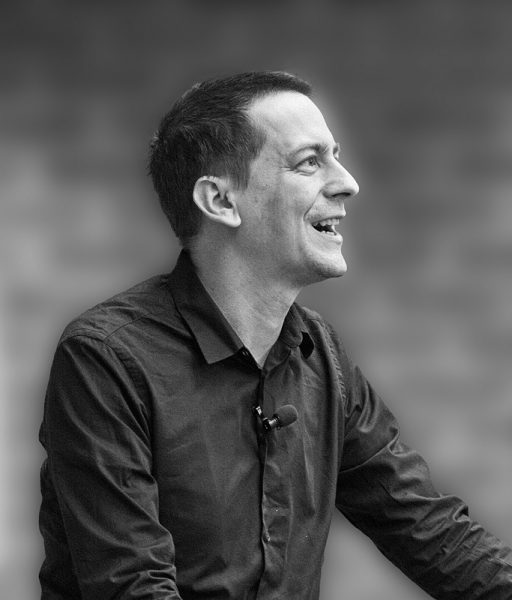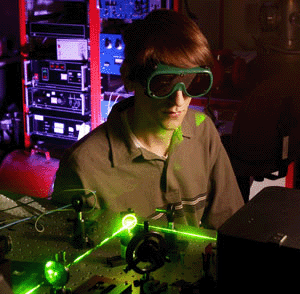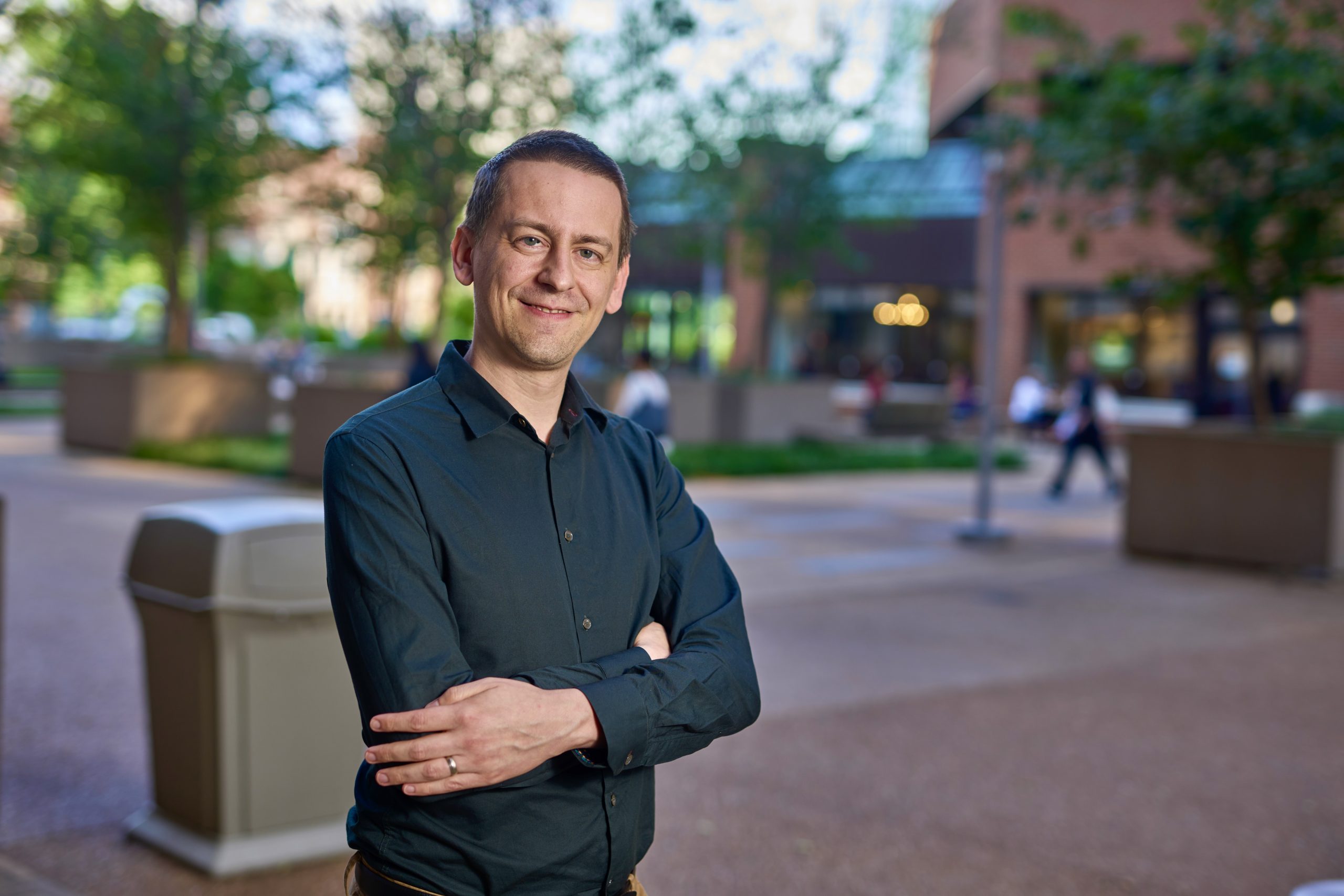
By Michael Blanding
When John Jumper, BS’07, arrived at Vanderbilt as an undergrad, he came with dreams of making a mark like his heroes from the golden age of physics in the early 20th century. “I always loved physics, especially this incredible period in which we discovered quantum mechanics and special relativity,” he says. “I really wanted to be a ‘laws of the universe’ physicist.”
The abstract nature of that field concerned his parents, both engineers, who “were a little worried I would never get a job,” he says. As it turns out, they needn’t have worried. Jumper received the news in October that he had won a prestigious Nobel Prize in chemistry for his research in computational biology, a field that is seeing a golden age of discovery just as momentous as the quantum physics of a century ago.
The youngest recipient in 70 years, Jumper received the award for his work creating AlphaFold2, a platform that uses artificial intelligence to solve a problem that has vexed biologists for years—how to determine the three-dimensional structure of a protein based on its sequence of amino acids. Launched in 2020 by U.K.-based Google DeepMind, the tool has been able to predict the structure of all 200 million proteins known to science with stunning accuracy.
“Since their breakthrough, AlphaFold2 has been used by more than 2 million people from 190 countries,” the Nobel Prize committee noted in its announcement of the prize, which Jumper shares with Google DeepMind colleague Demis Hassabis and David Baker of the University of Washington, who has used chemical tools to create new proteins. AlphaFold2 can be used in a bewildering array of potential applications, including drug discovery, enzyme creation and personalized medical treatments. “Life could not exist without proteins,” the Nobel committee said. “That we can now predict protein structures and design our own proteins confers the greatest benefit to mankind.”
Jumper’s career is a testament to his wide-ranging curiosity. He studied math and physics as a double major at Vanderbilt, which laid the foundation for his later work integrating disciplines of chemistry and biology.
“The College of Arts and Science is extremely proud of alumnus John Jumper’s astonishing accomplishment,” says Timothy P. McNamara, Ginny and Conner Searcy Dean of the College of Arts and Science. “His scientific impact is an incredible testament to the value of an arts and science education, the quality of the faculty who taught and mentored him, and the extraordinary careers that our graduates pursue.”
While at Vanderbilt, Jumper skipped many entry-level undergraduate courses and took several graduate-level courses instead. “I came in trying to race to the end of math and physics,” Jumper remembers. “I would just pack in as many classes as I could.”
While exceptional undergrads often take a few graduate classes, Jumper’s feat was remarkable, says his math adviser Larry Schumaker, Stevenson Professor of Mathematics. “He certainly had the confidence to go ahead with it, and he had the ability because, at least in my graduate classes, he did extremely well.” He notes that among the courses Jumper took were two graduate courses in computational mathematics, which provided some of the basis for his eventual breakthrough.
“It was quickly apparent that he was a standout intellect,” says David Mashburn, BS’06, MS’09, PhD’15, a fellow physics major and one of Jumper’s best friends at Vanderbilt. “He was unabashed in sharing thoughts and asking questions, but he was always polite and mindful of other people’s perspectives.” While Jumper was hardworking, “he was not a workaholic,” says Mashburn, who above all remembers his friend’s “insatiable curiosity. As with all good scientists, he is very much a student of problems and not of ‘disciplines.’”

Physics had just a dozen majors at the time, and Jumper enjoyed the freedom of conducting research with professors in a range of areas, including condensed matter physics with Kalman Varga; high-energy physics with Robert “Med” Webster; and lasers with Richard Haglund (where photographers staged an image of a young Jumper in goggles working with a laser made visible with dry ice). “I still very much consider myself a physicist,” Jumper says. “Even back then, I thought of physics as a kind of ‘applied arrogance.’ You believe if you try hard enough, you’ll be able to get at the essential truth of a thing and figure out the right thing to do when no one knows what they are doing. That philosophical position was incredibly formative to me.”
After graduation, Jumper pursued a Ph.D. in condensed matter physics through a Marshall fellowship at the University of Cambridge, but he left after a year in search of more practical experiences. In the midst of the 2008 recession, he was able to find a job at D.E. Shaw, a New York City–based global technology firm, studying proteins using molecular dynamics calculations— classical equations that can be used to solve problems involving millions of particles. Jumper was captivated by the field and, after three years, left to purse a Ph.D. in chemistry at the University of Chicago, which allowed him into the program despite his having no undergraduate experience in the field.
“I took my first chemistry class as a Ph.D.,” Jumper says, laughing—though of course he already had a strong background in quantum mechanics and computation. “I was still interested in these protein problems,” he says. “I just loved that if we did this well, then someone will go home from the hospital. There was an immediate connection to human meaning and impact.” Without access to the huge computer systems he had in private industry, Jumper turned to artificial intelligence to help solve the complex computations necessary for understanding all of the interactions between molecules that determine how a protein is folded in three-dimensional space.
Later at DeepMind, Jumper helped develop the original AlphaFold by 2018, using off-the-shelf machine learning algorithms. While it showed promise in predicting proteins, it was still a long way from perfect, so he and his colleagues made the risky move of scrapping their original platform and custom-designing AlphaFold2 using machine algorithms designed from scratch. After “a hundred small discoveries,” they had tweaked the algorithm so that when it was trained on just one percent of the data, it still performed better than its predecessor trained on 100 percent.
Since then, “the feedback has been extraordinary,” Jumper says. He knew he was onto something when researchers posted online wondering where AlphaFold2 had gotten the protein structure they had meticulously put together from empirical research. “They couldn’t believe it was a prediction of an algorithm, because it was identical to what they had determined experimentally,” Jumper says. As the researchers made their protein library available through open source, they began to see it crop up in hundreds, and then thousands of citations by scientists using it to solve problems in biology and medicine. In just one recent example, Jumper notes, researchers used the platform to determine which of 1,400 proteins in the sperm is responsible for allowing it to enter the egg during fertilization.
While people who track Nobel prizes considered Jumper a serious contender— especially after he won an Albert Lasker Basic Medical Research Award, often seen as a precursor for the Nobel, last year—he modestly figured he had a 10 percent chance of winning.
“While that’s an incredible chance, it meant a 90 percent chance of disappointment,” he says. “I thought I was going to hate early October for the next decade.” He still can’t quite believe that he won the award so quickly. “It’s really an acknowledgement that our work matters and that it has changed the practice of structural biology,” he says. “I think about all of the incredible discoveries that will [use it to] win Nobels in the years to come, and that is absolutely exceptional.”

In addition to the contribution to the fields of chemistry and biology, the award also serves as encouragement to young scientists at Vanderbilt: Someone who was once in their shoes can achieve the highest award in science.
“We care a great deal to nurture and develop our students’ talents by providing intellectual challenges for them both in the classroom and in our research labs,” says physics and astronomy department Chair Julia Velkovska. “John Jumper’s achievement is an inspiration to students and faculty alike.”
His achievement is a testament not only to the solid foundation of a Vanderbilt education, but also to the value of curiosity to follow one’s passions across boundaries, adds John Kuriyan, dean of the School of Medicine Basic Sciences. “It’s my hope that Jumper’s story will inspire Vanderbilt students to pursue interdisciplinary paths and realize that an undergraduate major is just the beginning in the endless pursuit of knowledge.”
